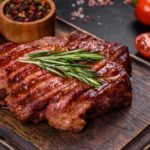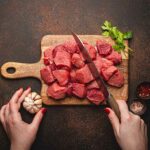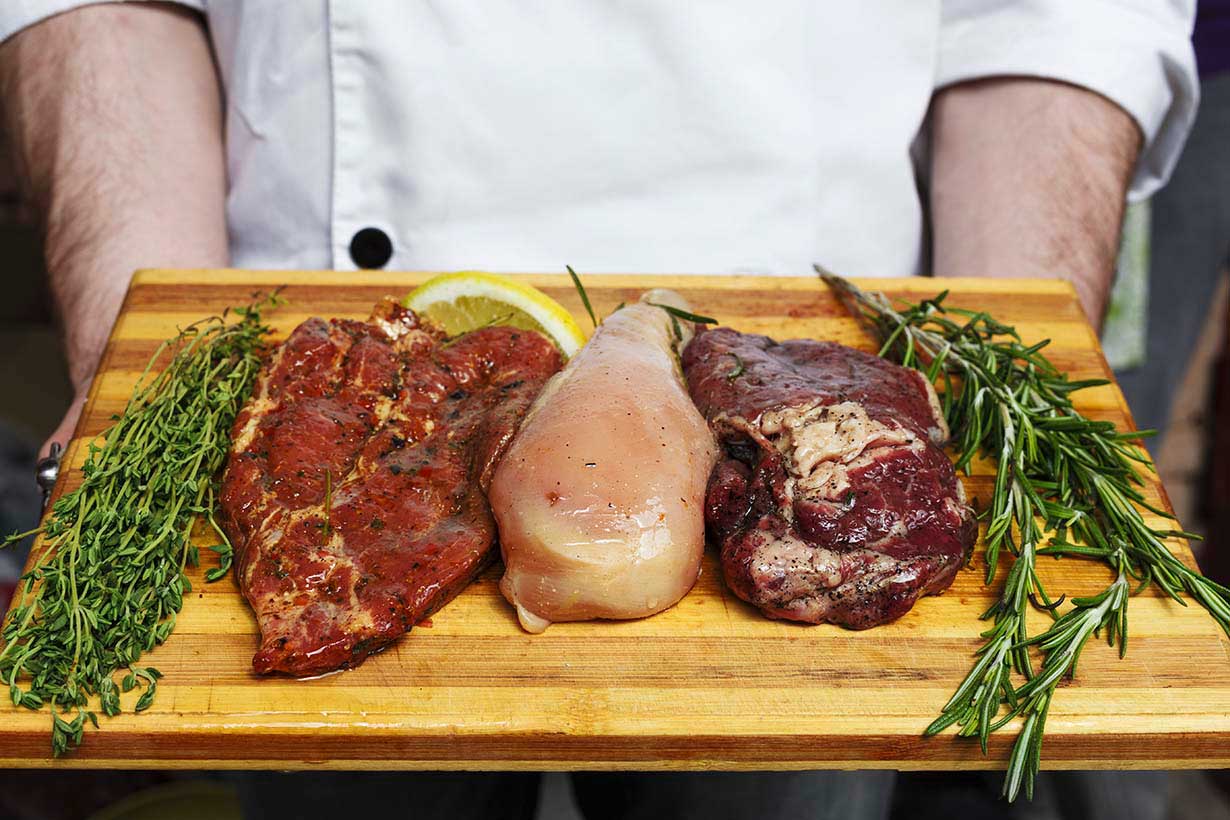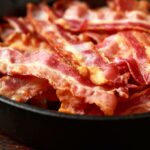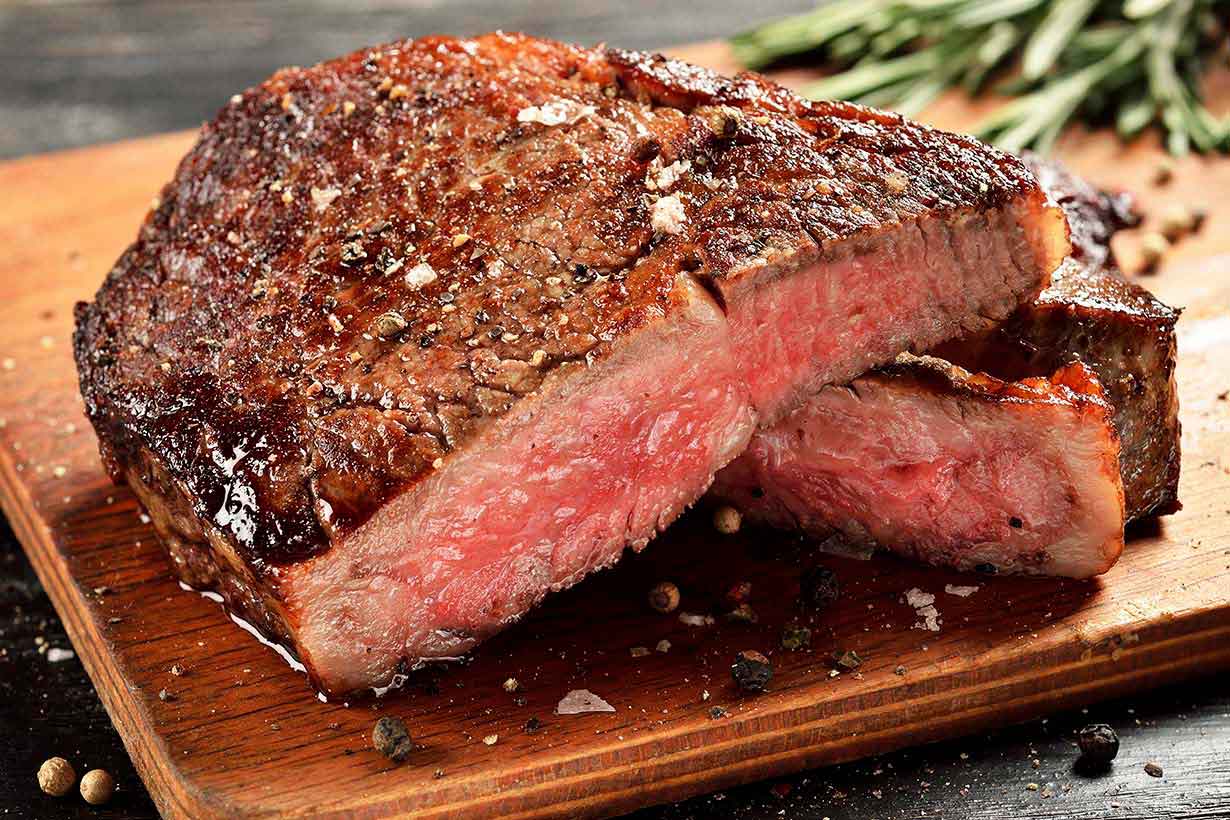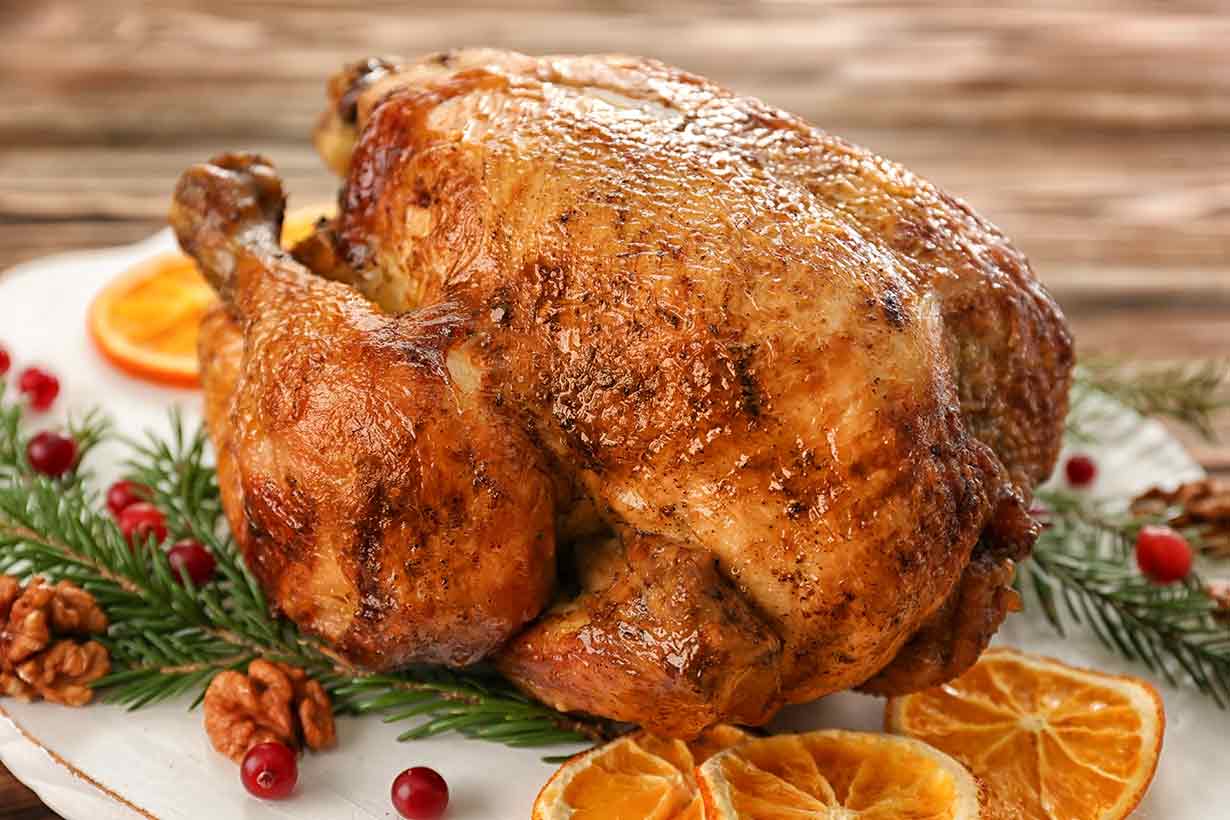Goat meat is considered either a staple food or a delicacy depending on the region.
However, in the United States and much of Europe, it is relatively uncommon compared to more typical meat products.
This article provides a guide to goat meat and what it offers in terms of nutritional value.
What Nutritional Values Does Goat Meat Have?
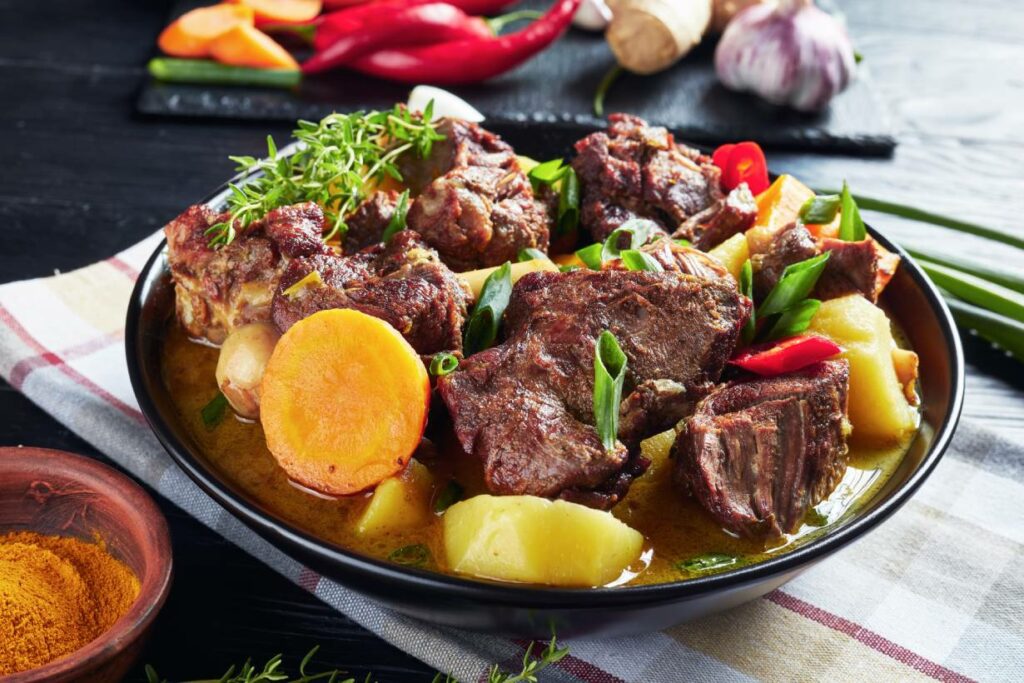
First of all, let’s examine the full nutritional value of goat meat.
The following nutritional data is for cooked goat meat per 3.5 oz (100-gram) serving, with data sourced from the USDA’s FoodData Central database (1).
All daily values (% DV) have been calculated using USDA data alongside the FDA’s published daily values (2).
Nutrition Facts
| Name | Amount | % Daily Value |
|---|---|---|
| Calories | 143 kcal | |
| Carbohydrates | 0 g | 0% DV |
| Fiber | 0 g | |
| Sugars | 0 g | |
| Fat | 3.03 g | 3.9% DV |
| Saturated | 0.93 g | 4.7% DV |
| Monounsaturated | 1.36 g | |
| Polyunsaturated | 0.23 g | |
| Omega-3 | 0.02 g | |
| Omega-6 | 0.13 g | |
| Protein | 27.1 g | 54.2% DV |
| Cholesterol | 75 mg | 25% DV |
Vitamins
| Vitamin | Amount | % Daily Value |
|---|---|---|
| Choline | 106 mg | 19.3% DV |
| Folate, DFE | 5 mcg | 1.3% DV |
| Vitamin A, RAE | 0 mcg | 0% DV |
| Vitamin B1 (thiamin) | 0.09 mg | 7.5% DV |
| Vitamin B2 (riboflavin) | 0.61 mg | 46.9% DV |
| Vitamin B3 (niacin) | 3.95 mg | 24.7% DV |
| Vitamin B6 | 0 mg | 0% DV |
| Vitamin B12 | 1.19 mcg | 49.6% DV |
| Vitamin C | 0 mg | 0% DV |
| Vitamin D | 0 mcg | 0% DV |
| Vitamin E | 0.34 mg | 2.3% DV |
| Vitamin K | 1.2 mcg | 1.0% DV |
Minerals
| Mineral | Amount | % Daily Value |
|---|---|---|
| Calcium | 17 mg | 1.3% DV |
| Copper | 0.303 mg | 33.7% DV |
| Iron | 3.73 mg | 20.7% DV |
| Magnesium | 0 mg | 0% DV |
| Manganese | 0.042 mg | 1.8% DV |
| Phosphorus | 201 mg | 16.1% DV |
| Potassium | 405 mg | 8.6% DV |
| Selenium | 11.8 mcg | 21.5% DV |
| Sodium | 86 mg | 3.7% DV |
| Zinc | 5.27 mg | 47.9% DV |
Other
Goat meat is also a source of several bioactive compounds sometimes referred to as ‘zoonutrients.’
These include (3):
- Anserine
- Carnosine
- Creatine
Goat Meat Is Lower In Saturated Fat Than Other Red Meat
One benefit of goat meat is that it tends to be leaner than other types of red meat and has a lower saturated fat content.
In fact, goat meat appears more comparable to poultry than other red meat in its saturated fat content. For example, the nutrition facts section shows that 100 grams of cooked goat meat provides less than a gram of saturated fat (1).
By comparison, meat products such as beef and lamb contain significantly higher quantities of saturated fat. For example, per 100 grams, 80% lean beef contains 6.16 grams, whereas cooked lamb shank has 5.6 grams (4, 5).
High dietary intake of saturated fat can lead to increased levels of LDL-Cholesterol (LDL-C), sometimes referred to as “bad cholesterol” (6).
LDL-C is also a marker of apolipoprotein B (Apo B), a protein that plays a role in the transportation of fats and cholesterol. Higher LDL-C and Apo B levels are both consistently associated with an increased risk of cardiovascular disease (7, 8).
Thus, leaner meats like goat meat may be a beneficial alternative to foods like fatty beef for individuals wanting to lower their LDL cholesterol.
Goat Meat Is One of the Leanest Sources of Protein
Total energy intake (calories) and protein intake arguably impact body composition and lean muscle mass most.
While some foods are high in protein, consuming enough of them to get sufficient protein can require a simultaneously high level of calories. For example, pork belly contains some protein, but due to its sizeable fat content, it is also a high-calorie food.
In contrast, lean protein sources can be very protein-dense, meaning they have a high protein level compared to their total energy content.
Goat meat is a protein-dense food, with 100 grams of cooked goat meat containing 27.1 grams of protein for only 143 calories (1).
In comparison, the earlier example of pork belly would provide 26.6 grams of protein for 404 calories when cooked (9).
Lean protein sources like goat meat can be particularly beneficial for individuals with high protein targets or those trying to lose weight while still getting sufficient protein to protect against muscle loss.
A Rich Source of B Vitamins
Similar to other varieties of meat, goat meat contains high levels of B vitamins.
The nutritional values section shows that 100 grams of goat meat provides nearly 50% of the daily value for riboflavin (vitamin B2) and vitamin B12. Additionally, it contains approximately 25% of the daily value of niacin, also known as vitamin B3 (1).
B vitamins are essential nutrients vital in producing energy from carbohydrates and fats and transporting it through the body (10, 11).
In addition to its B vitamin content, goat meat also offers a good provision of a vitamin-like nutrient called choline.
High Levels of Iron, Zinc, and Other Minerals
One of the main benefits of goat meat is the significant mineral content that it provides.
As we can see from looking at the mineral composition table (table 3), goat meat offers a broad range of essential minerals.
Among these, it offers more than 20% of the daily value for four specific minerals: copper, iron, selenium, and zinc (1).
While most people in the United States have a sufficient zinc intake, zinc deficiency is estimated to impact approximately 17% of the world’s population globally (12).
Zinc deficiency is estimated to occur most frequently in Africa and Asia. Goat meat is a staple food in parts of these continents and the primary source of animal protein in developing countries (13).
100 grams of goat meat provides 48% of the recommended daily value for zinc (1).
The Local Environment and Supplementation Programs Impact the Nutritional Properties of Goat Meat
The production of animal-based foods can be influenced significantly by feeding programs and the local environment in which the animals are raised.
This is also true of goat meat, and research has shown that these considerations impact the nutritional properties of the meat.
On this note, meat from goats that grazed exclusively on flatland pasture had significantly more protein, monounsaturated fat, and polyunsaturated fat and lower levels of saturated fat (14).
Potential Downsides of Goat Meat
There are also some potential downsides of goat meat to consider, which mainly revolve around the relative lack of availability.
Lack of Availability, Commercial Viability, and Expense
Firstly, goat meat is not as popular as more traditional meat options (beef, chicken, lamb, pork) culturally in some countries. As a result, it can be more challenging to find and expensive.
Goat meat tends to be difficult to find in the United States, the United Kingdom, and much of Western Europe. However, goat meat is a staple food in many parts of Africa, Asia, Mexico, the Middle East, and the Caribbean.
Additionally, goat meat isn’t always as commercially viable as meat products from other animals. This is primarily explained by the relatively small body weight of goats and the fact that meat production from one goat can be as low as 8-10 kilograms (15).
Red Meat Is Associated With Adverse Health Outcomes
Another potential downside of goat meat is that it is a form of red meat, which is associated with colorectal cancer and an increased risk of cardiovascular disease (16, 17).
However, it is important to consider this topic with nuance; first, an association does not necessarily mean the relationship is causal.
Additionally, the research shows that the relative risk of red meat causing these conditions is relatively low.
For more on this topic, see this guide to red meat and health outcomes:
Is Steak a Healthy Choice? An Objective Guide To Red Meat
Goat Meat Can Be Difficult To Produce
This potential downside mainly relates to developing countries, but goat meat can be challenging to produce, and several problems can occur.
As mentioned previously, goat meat is the primary animal-based protein food in the developing world (13). This being the case, anything that negatively influences production figures can potentially cause harm.
For example, news stories from 2019 show that Australia’s goat meat production was impacted that year by drought conditions. This led to a reduced supply and increased prices.
How To Use Goat Meat
Firstly, goat meat can be used in a similar way to any other meat and in recipes that call for meat.
However, there are also some cultural dishes in countries where goat meat is a staple food.
Wikipedia has a list of goat dishes here.
Additionally, here are ten popular goat recipes from around the world.
Common Questions About Goat Meat
Lastly, here are some answers to common questions people have about goat meat.
Yes, goat meat is a form of red meat. This is because it is a form of muscle meat from a mammal. Red meats like goat meat appear red due to a red-pigmented protein they contain called myoglobin.
This depends on the country, but in countries such as the United States and the United Kingdom, one of the main reasons is the lack of demand. Other animal foods are more popular, goat meat can be costly and challenging to produce, and as there is a lack of demand, there is a lack of will to make it more widely available.
Goat meat provides protein, a range of vitamins and minerals, and it contains fewer calories and saturated fat grams than many other types of red meat. In this sense, goat meat can provide a good range of nutrients to the average diet. However, as with any food, no single food will make or break a diet, and the overall dietary pattern matters most.
Goat meat may sometimes be referred to as mutton, chevon, or cabrito.
Final Thoughts
Despite being red meat, goat meat is very lean and has a nutritional profile more similar to poultry such as chicken.
It can be more difficult to find in countries where it is not a staple food.
However, it provides good nutritional value and offers high levels of protein, vitamins, and minerals for relatively few calories.


